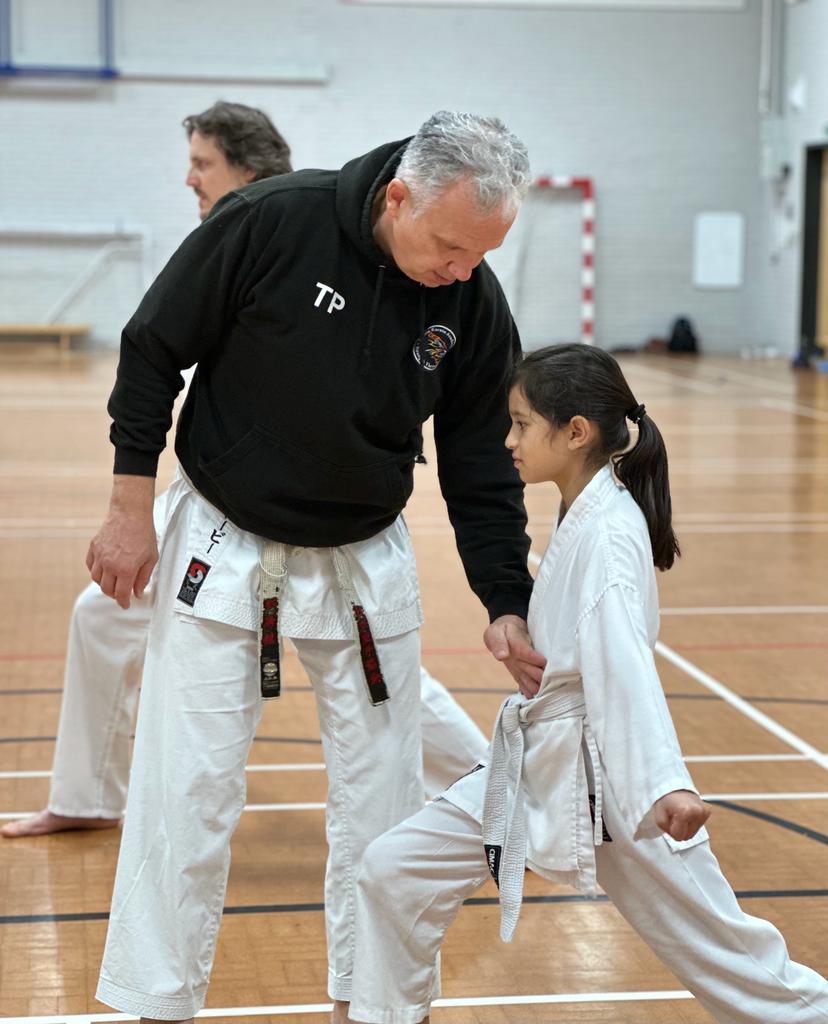How important is it to practice outside of class?
Very.
It is something we try to impress on our students at every Academy session. Having said that it’s very easy to say… you must practice! But what must you practice? How do you practice?
Karate training can sometimes seem like a mountain… a big mountain. There is a lot to do and there is a lot to be aware of. Sometimes it can be very overwhelming.
That being said, you don’t climb a mountain in one big step. You climb it in lots of little ones. A journey of a thousand miles begins with a simple step…sounds daunting to me. How about just concentrate on the little steps and the big step will take care of itself.
Firstly why is it important to practice outside of class? After all, you pay your. membership fees you turn up to the class or classes that you’re supposed to and you should walk away. That should be enough shouldn’t it?
Not quite…the founder of Shotokan karate, Sensei Gichin Funakoshi, said that “karate is like boiling water, if you do not heat it constantly it will cool”. What does this mean? Sounds very mystical.
It’s true. If you do your session, leave the dojo and don’t practice or keep your Karate warm at the very least. Then your progress may be slow and in some cases may become stagnant. In some respects, you will remain at the same level as you were the previous week where what you actually want is to get better
Now I am not talking about doing 30 minutes or 60 minutes training every day because that is a bit impractical. But even 2–5 minutes a day can really improve your performance in the dojo. The question isn’t how long you should be practicing but what you should be practicing.
In my own practice, I have areas that I need to work on. I have to work daily on my own flexibility to keep it functional and dare I say, hopefully, improve it!
In addition, practicing Kata daily helps me communicate and teach better when in class. If I do not practice Kata, then I find that I may lose some of the nuances and key components which will help the students develop better.
So those are the two key areas that I stay on top of. They are not the only things.
So what should you stay on top of?
Self practice or leading your own training outside the dojo requires a lot of honesty and transparency with yourself. Think to yourself, is there a recurring comment that comes up in your classes?
Is your front knee not bent enough?
Do you have a loose fist?
Could your core be stronger?
These are things that can be fixed in self-led training in a few minutes in a daily routine.
There may be a part of the Kata that you haven’t quite got hold off yet. Once again, a few minutes per day practicing just that section will help.
If you can identify, where you need to direct your efforts then you find yourself improving. Then when you come to class you’re able to concentrate on something else and your overall performance will improve.
This is nothing new and it’s not particular to Karate. It coudl apply to anything. It is the approach that is important and the habit. Whatever it is that you are doing, find the one thing that you can tackle and do some extra practice on it. Fix it. Then find the next thing and fix that. Before you know it you will have fixed a lot. Your trajectory wall have changed.
Along the way, you will learn a lot of other things and you will get into the habit. you will develop consistency and a can –do attitude. Consistency breeds resilience and a can do attitude breeds positivity and confidence.
It all starts with a small step, just find that one thing and tackle that. That is all there is to it.




